
It’s hard to believe that one of the greatest performance artists alive could have completed only six works in the span of his 21 year career. But Tehching Hsieh isn’t your average artist. After dropping out of high school in Taiwan to briefly focus on painting (and soon after, abandoning it for performance), Hsieh enlisted in the military service where he was trained to become a master of the seas. After his service, on his very first assignment abroad as a sailor on an oil tanker, Hsieh pulled the ultimate performance by jumping ship as it was docked at the port of Philadelphia. He then paid a taxi driver $150 to take him to New York City, the “arts center of the world” that he longed for. He was an illegal immigrant for 14 years until he was granted amnesty in the US in 1988.
Upon his arrival to New York, Hsieh began doing what he could to get by, working as dish washer and construction worker all the while exploring how to “change life into art.”
In 1978, he began the first in a series of grueling One Year Performances for which he would become best known. From living in a cage to chaining himself to a stranger and punching a time clock on the hour, every hour, for one year, Hsieh took his art to the limits of what is mentally and physically possible through his one-year performances. Yet, despite being called a “master” by Marina Abramovic, Hsieh lived in relative obscurity for the majority of his career, and very humbly declares his art practice as just a means of “passing time.”
Jessica Oralkan speaks to Tehching Hsieh about being an outsider and the importance of going back to life to find the art.
You were determined to make it to the arts capital of the world–New York–quite literally sneaking into the United States in 1974 aboard an oil tanker. You didn’t speak English, didn’t know anyone in this country, and had no arts training. Where did this drive come from and what were you hoping to achieve here?
I had some art lessons when I was young but my motivation for art eventually became so strong that I had to drop out from high school to focus on art, and through art to ponder life, time, and being. My influences were Dostoyevsky, Kafka, and my mother; my own practice was very important to my growth as well.
New York was the arts center of the world that I longed for. As an illegal immigrant entering the States in 1974, I paid a high price of survival, and at the same time, I tried to transform life into art. New York is the place I express art freely.
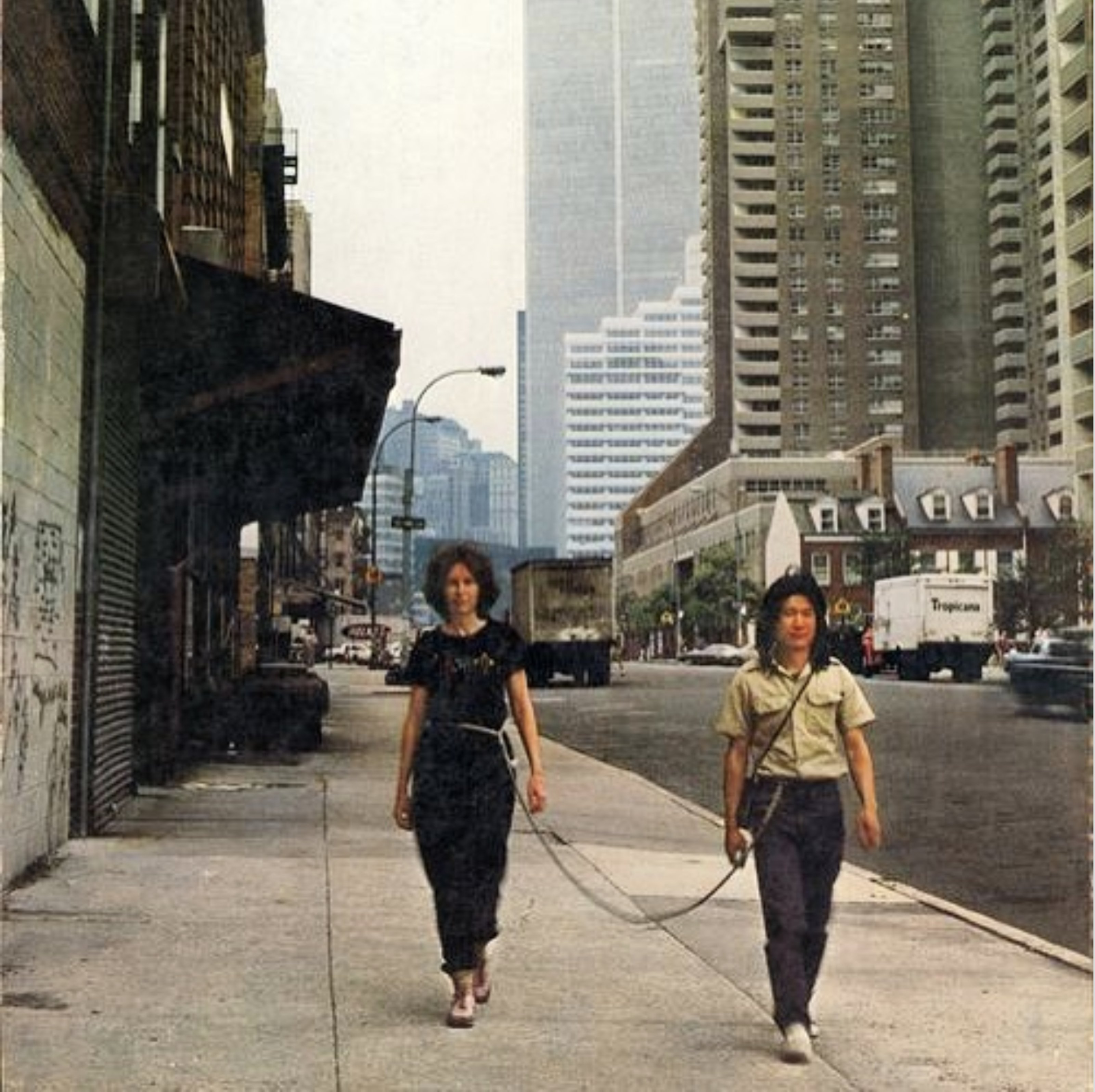
I imagine you went through quite a bit of hardship alone in a new country. How did you manage to develop a strong foundation to prepare mentally and physically for this series of One Year Performances that you were planning to undertake?
This is a good question. I was an illegal immigrant in the States for fourteen years, and most of my One Year Performances were done during this time. We could use the Panama Canal as an example: when a ship comes from a lower to a higher water level, or the other way around, the ship can pass through only when the two different water levels meet. The water level of my art and life need to be the same, so I can sail into art from life, and transfer life time to art time.
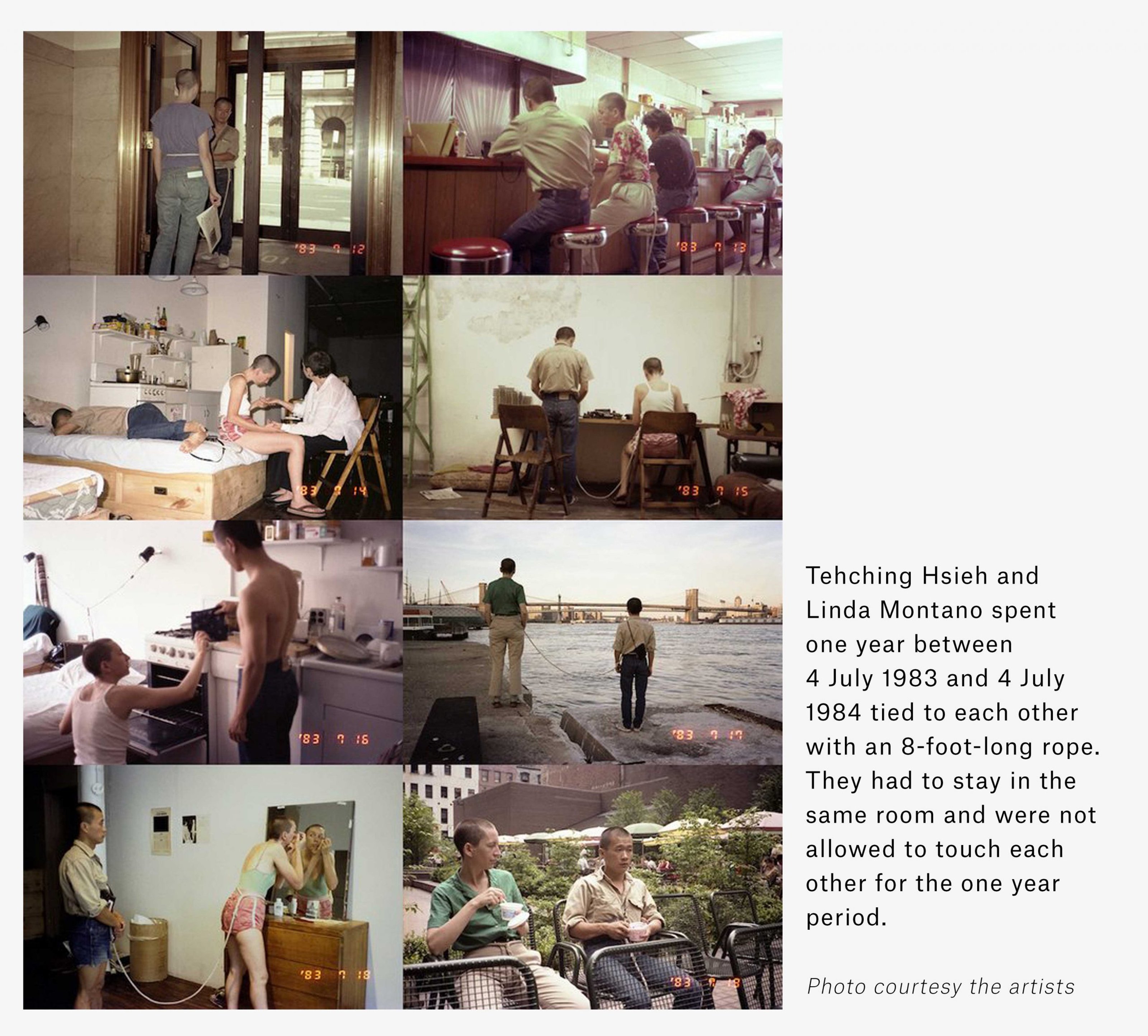
Tehching Hsieh and Linda Montano, One Year Performance 1983-1984
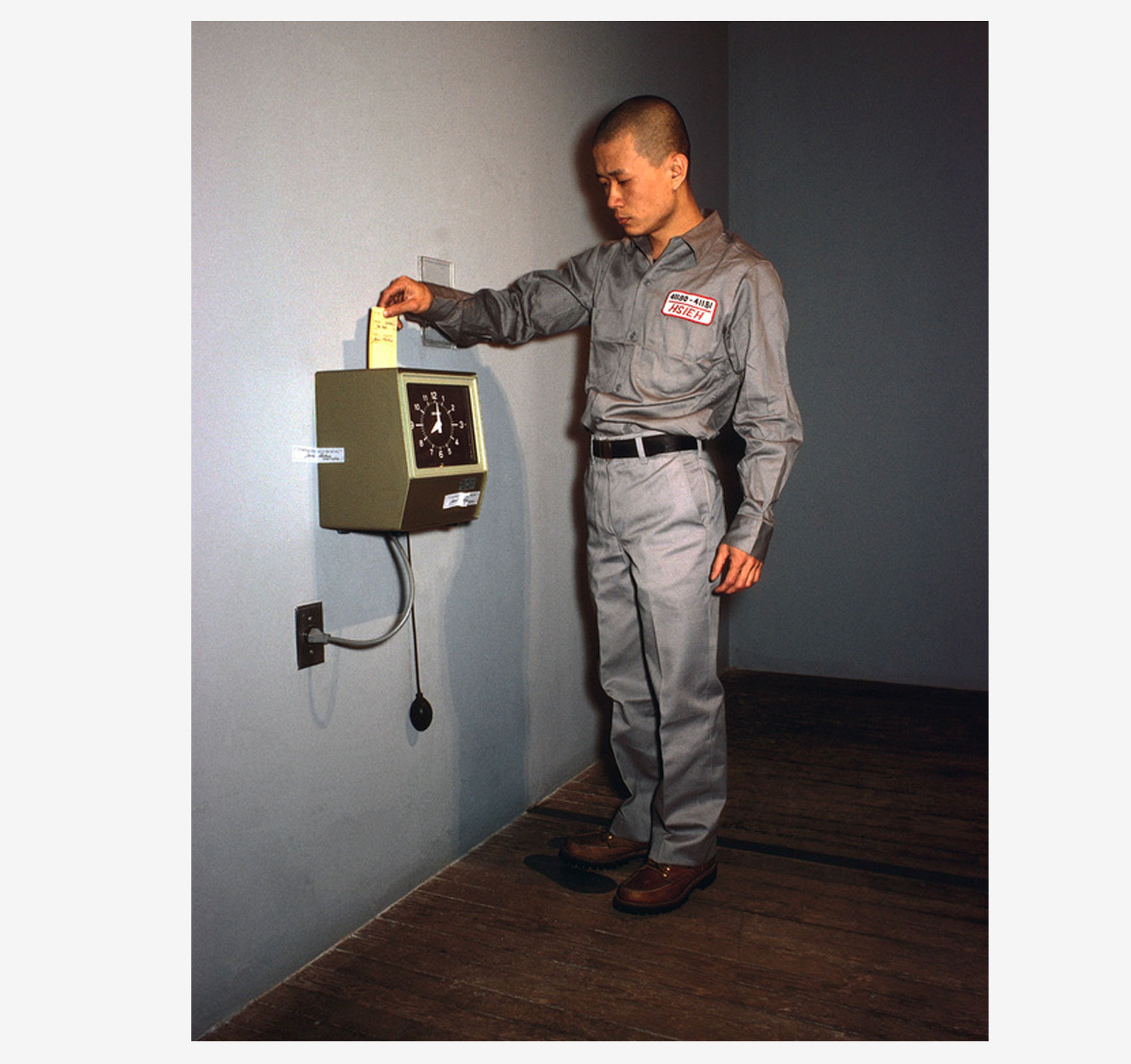
You describe your philosophy in that your works are just ways of passing time. Why is the one year period of time important?
One year is the time frame that the earth revolves around the sun, it is also a measurement used in calculating our life. My One Year Performances think about life from different perspectives, and all my works can be reflected by these words: life is a life sentence, life is passing time, life is free thinking.
Tehching Hsieh – Time Clock Piece (One Year Performance 1980–1981) For Time Clock Piece, Hsieh punched a time clock every hour of every day for one year. Shaving his head at the onset, and photographing himself each time he punched the clock, he took a single picture of himself with a 16mm movie camera, which together yield this 6-minute film animation.
While participating within the art world with your performances, you were forever operating outside of it as well, often washing dishes and doing construction work as a means to get by. Why do you think you were overlooked by the art world for so long? What changed?
My work was not part of any art movement, it was not easy to be categorized, I was an outsider in the art world—and in reality. But I believed that solitude is good for understanding and responding to the essence of being, I believed in what I do. Being overlooked by the art world didn’t bother me, I made a living through worker’s jobs. That suits my character better. Even now, the neighbors on my block only know me as a construction guy, not an artist at all.
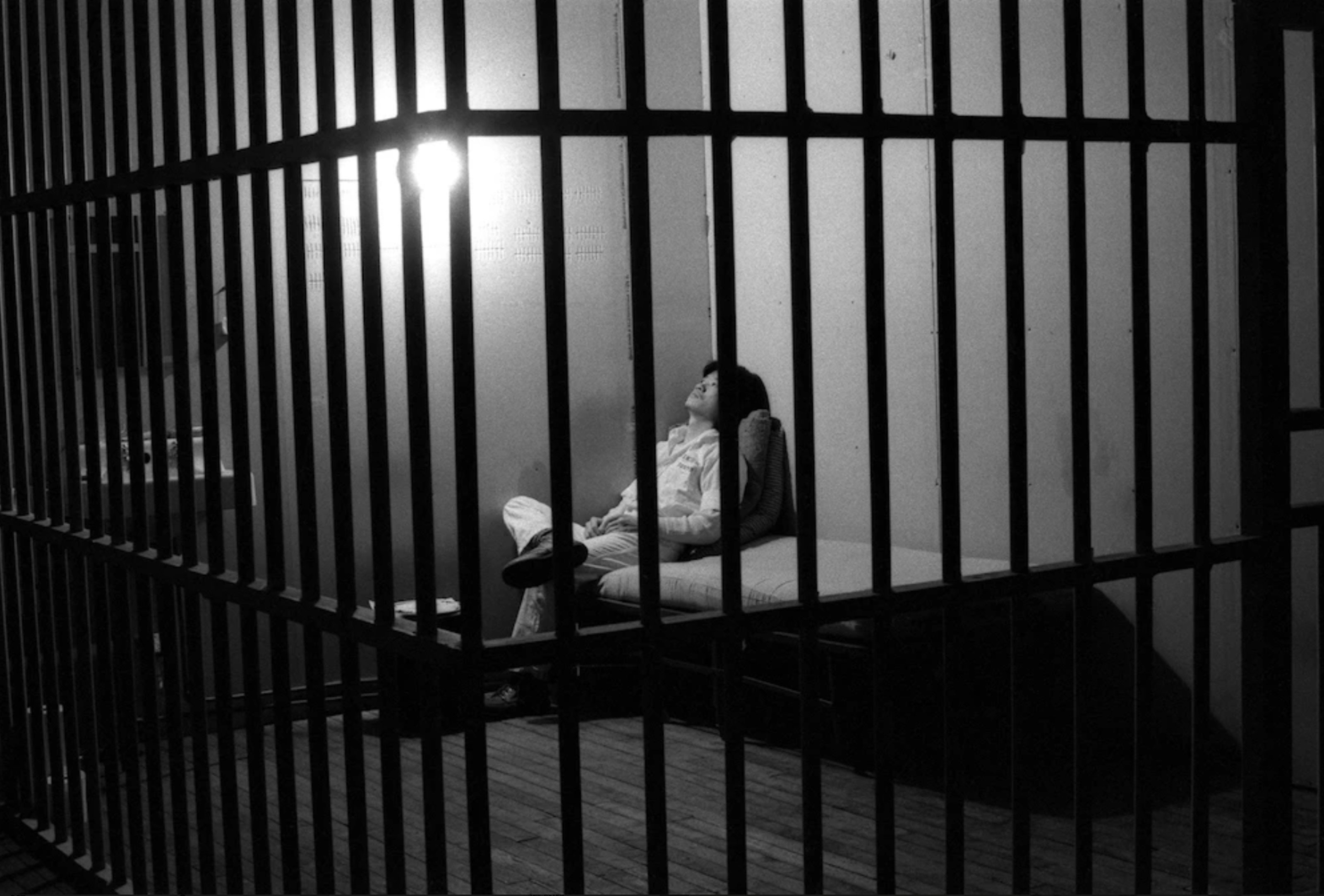
Artwork: One Year Performance 1978-1979 (Cage Piece) Tehching Hsieh lived in a cage in his Tribeca loft for one year, not reading, not writing, not speaking to anyone. His loftmate came daily to deliver food, remove his waste, and take a single photograph to document the project. The performance was open to be viewed once or twice a month from 11 am to 5 pm.
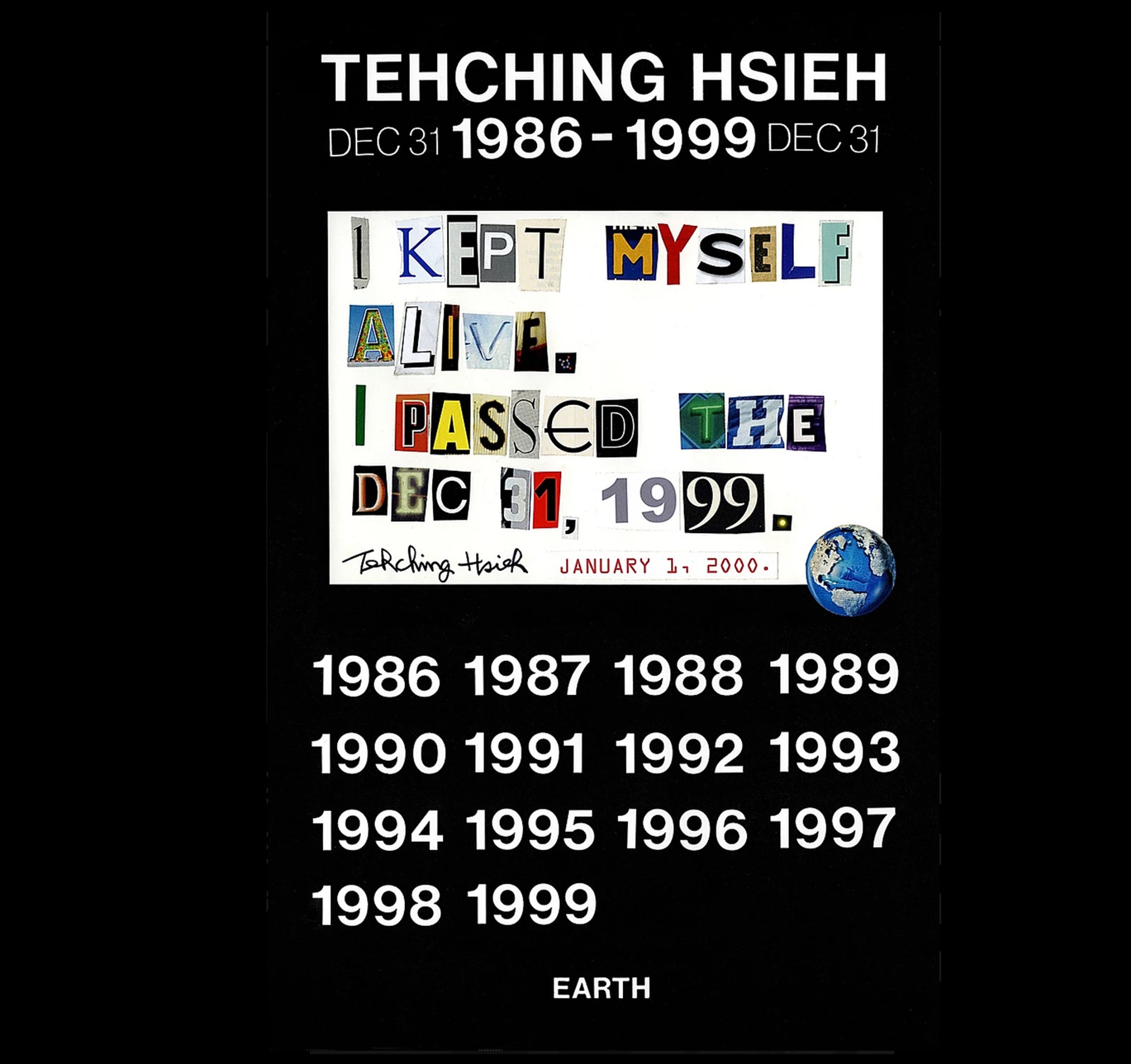
The final work you ever made was 1986-1999 (Thirteen Year Plan). Given that your performance pieces prior to this had a duration of one year, where did the significance behind the number 13 come from? Why did you stop here?
Thirteen Year Plan started on Dec 31, 1986 and ended on Dec 31, 1999. After five One Year Performances, I needed to live in a longer duration of time to respond to art, so I started on my 36th birthday, and ended on my 49th birthday when we reached millennium.
There could arise an occupational habit when doing art for a long time. For me, art is dynamic; sometimes you have to go back to life to find the art. I stopped creating art in 2000.
Artwork left: 1986-1999 (Thirteen Year Plan)
In 1986, Hsieh began his Thirteen Year Plan: he would make art, but not show it publicly. As was his process, at the end he issued his concluding report: “I kept myself alive. I passed the December 31, 1999.” The report consisted of cutout letters pasted onto a single sheet of paper.